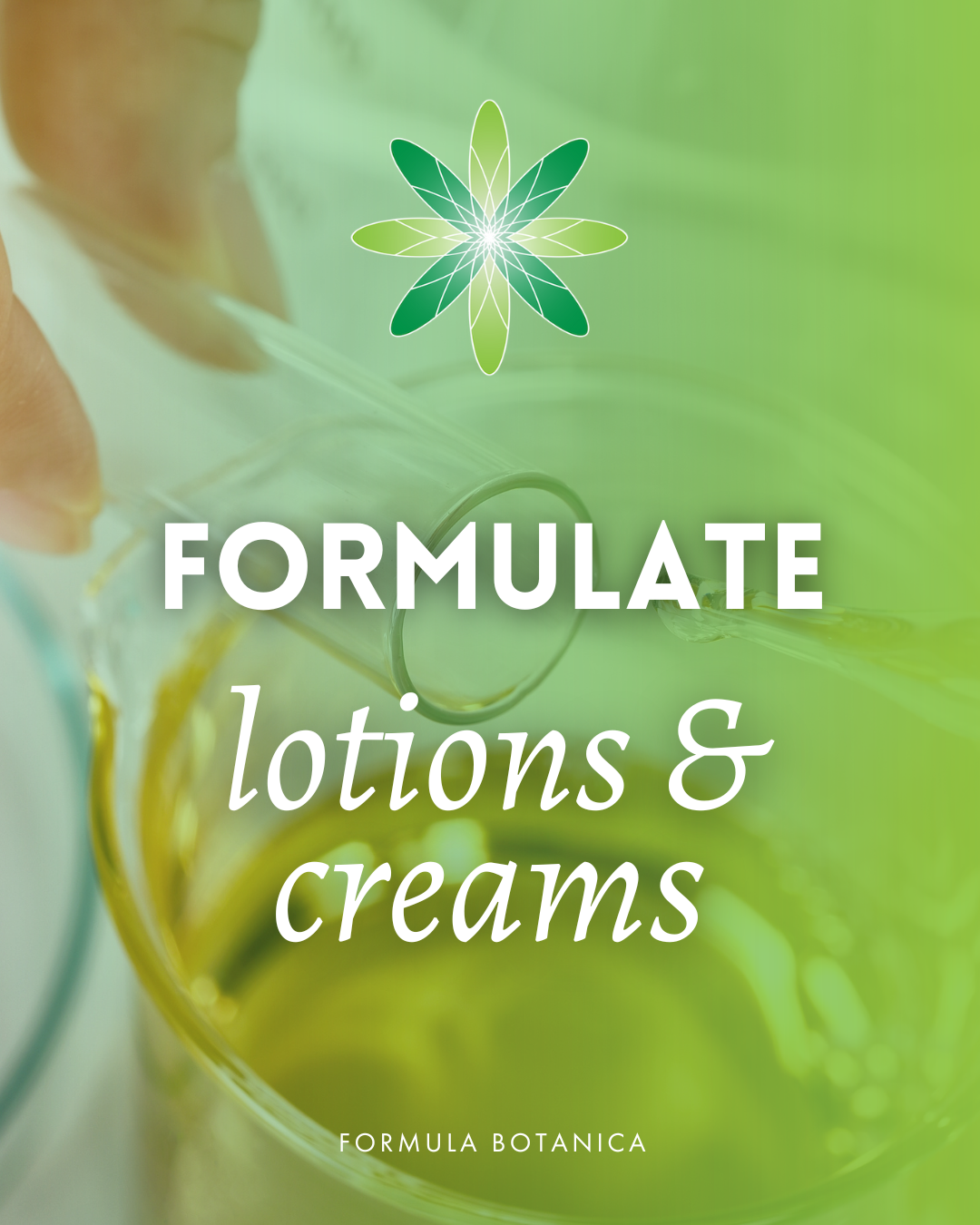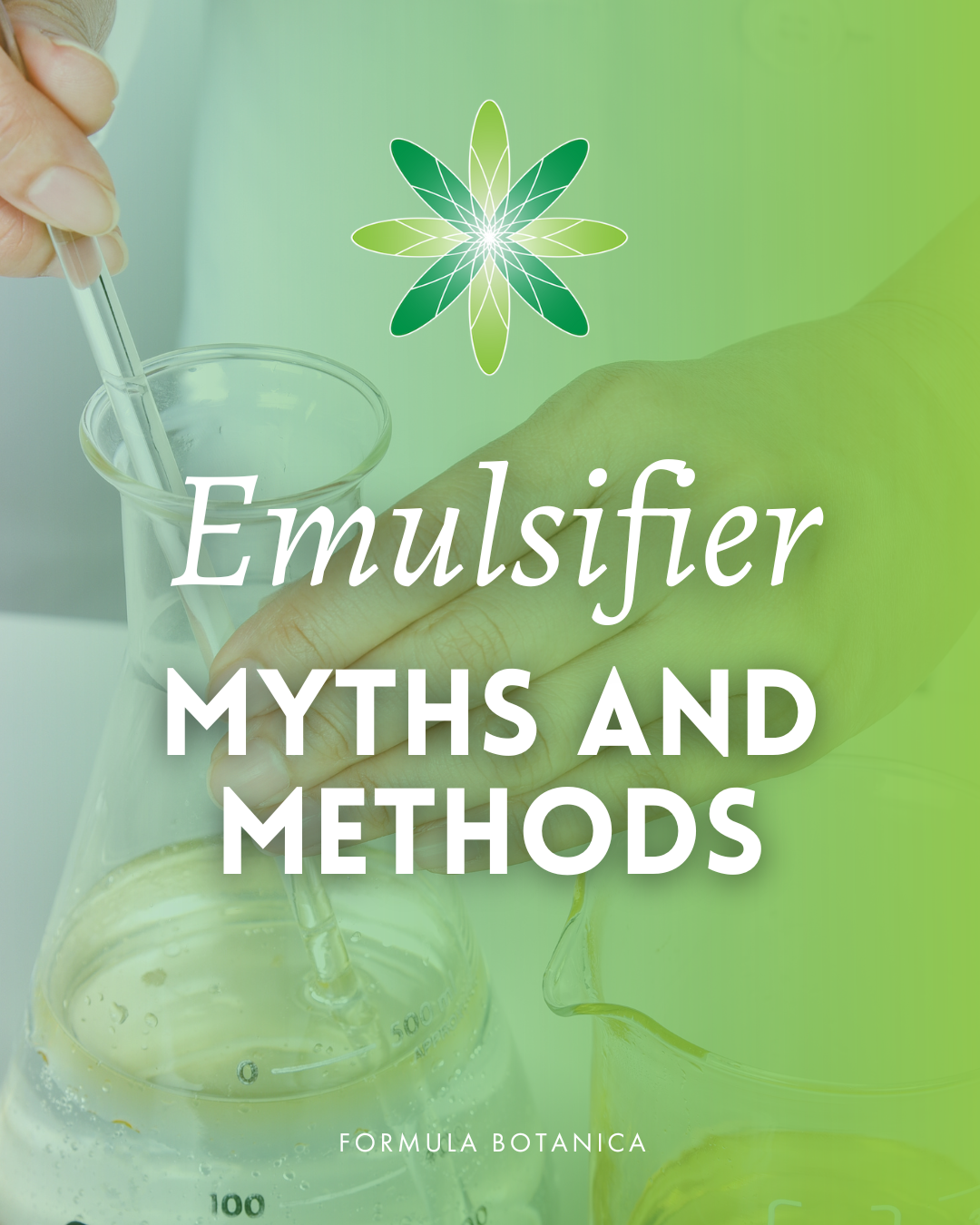[ad_1]
Up to date: 26.03.24
Pure emulsifiers are a number of the trickiest components to work with whenever you’re making clear, inexperienced and natural skincare or haircare formulations. We all know, as a result of we’ve been doing it for years! We’ve additionally been writing about pure emulsifiers for years, so this text summarises (and can proceed to summarise) all the pieces you’ve ever wished to learn about natural and pure emulsifiers.
What’s an emulsifier?
An emulsion is a mix of water and oil, which is introduced collectively by way of an emulsifier to create a homogenous mix. There are lots of emulsifiers in the marketplace which may be utilized by natural skincare and haircare formulators. They are often oil-in-water (O/W) or water-in-oil (W/O) emulsifiers, or they are often scorching processed or chilly processed.
How to decide on the perfect natural & pure emulsifiers

An oil-in-water (O/W) emulsifier disperses nice droplets of oil by an aqueous base. These O/W emulsions are typically extra liquid, corresponding to milk or a pores and skin cleaning lotion. A water-in-oil (W/O) emulsion disperses ultra-fine droplets of water all through the fatty base components. These emulsions are typically fairly thick and greasy. We frequently see that lots of our college students at System Botanica choose O/W emulsions probably as a result of they’re much like typical lotions and lotions.
Your selection of pure emulsifier is a private choice, however you must take into account many different elements, corresponding to these we cowl in these guides:
Learn how to choose the best emulsifier for your organic cosmetic formulation – the important thing 17 factors to think about earlier than selecting an emulsifier. It is a must-read earlier than you select an emulsifier, and a useful resource to return to.
The difference between cold process, hot process and hot-cold process emulsions – the basic variations that decide how to decide on the perfect pure emulsifier for the job.
Which natural & pure emulsifiers do you have to use?

We’ve taken a number of the arduous work away from you and examined out quite a few pure emulsifiers for you. As we trial extra pure emulsifiers, we are going to add them to this checklist.
Learn to make emulsions with these emulsifiers (click on the hyperlinks for demo formulations):
- Olivem 1000 (Cetearyl Olivate (and) Sorbitan Olivate) – that is the go-to for anybody beginning out. Olivem 1000 is tremendous simple to work with whenever you’re making oil-in-water emulsions. It’s non-ionic and varieties liquid crystal buildings that assist enhance pores and skin well being by mimicking the pores and skin’s pure lipid organisation.
- Vegetal / Montanov 68 (Cetearyl Alcohol and Cetearyl Glucoside) – that is one other favorite for its capability to create clean, non-soapy, oil-in-water emulsions. Like Olivem 1000, this non-ionic emulsifier varieties liquid crystal buildings that mimic the pure lipid association within the pores and skin’s outermost layer, bettering the pores and skin barrier.
- Xyliance (Cetearyl wheat straw glycosides and Cetearyl alcohol)
- Olivem 900 (Sorbitan Olivate)
Different emulsifiers we love working with embody:
Ritamulse SCG / ECOMulse – Ritamulse SCG, also called ECOMulse, stands out as an anionic, oil-in-water emulsifier. It’s celebrated for its ease of use and skill to create wealthy, thick emulsions. It has a excessive electrolyte tolerance and a novel powdery really feel on the pores and skin, making it a favorite for a lot of formulators.
Polyaquol 2W – this can be a non-ionic, oil-in-water, versatile emulsifier that’s simple to make use of. It possesses a variety of formulation compatibility whereas offering a novel pores and skin really feel to emulsions. It may be used to create emulsions with low viscosity or wealthy lotions.
Montanov 202 – that is our palm-free possibility of emulsifier. It’s a non-ionic emulsifier that creates oil-in-water emulsions and varieties liquid crystal buildings much like the stratum corneum’s lipids, aiding within the enhancement of the pores and skin barrier.
Many on-line DIY blogs and books will let you know that you should use beeswax as an emulsifier. We put their speculation to the take a look at to as soon as and for all exhibit that beeswax can’t be used as a stand alone emulsifier.
Lotions and lotions with pure emulsifiers

Attempt making these emulsion formulations to check out the emulsifiers above, in addition to others:
Working with natural & pure emulsifiers

Warmth-and-hold fable – when you comply with on-line blogs or programs taught by on-line DIYers, then you definately may need realized learn how to use the ‘heat-and-hold’ technique. This technique is a fable and we suggest that you simply ignore all the pieces you’ve examine it.
HLB or the hydrophilic-lipophilic stability – the HLB of a surfactant expresses the stability between the hydrophilic (water-loving) and the lipophilic (oil-loving) components of an amphiphilic molecule (a molecule that has each lipophilic and hydrophilic components).
Anybody who encourages you to calculate the HLB of your emulsifiers will probably be primarily used to working with artificial emulsifiers and gained’t essentially perceive the nuances of natural beauty formulating.
Learn why you should ignore the HLB method for natural and organic emulsions.
Oil-in-water or water-in-oil?
Theoretically, realizing the hydrophilic-lipophilic stability (HLB) of your chosen emulsifier ought to provide help to decide whether or not you’ve ready a water-in-oil (W/O) or an oil-in-water (O/W) emulsion. We’re right here to let you know that sadly the science will not be all the time that straightforward. Relying on the emulsifier you select, it’s potential that you simply come to surprising outcomes and that your beauty emulsion will not be what you assume it’s.
Learn how to test your emulsion to find out whether it is W/O or O/W.
Beauty stability and pure emulsifiers
One of many largest challenges confronted by formulators making emulsions is guaranteeing that these emulsions stay secure.
In case your emulsion isn’t secure, then over time you could begin to see the water and oil splitting from one another once more. This course of known as ‘section separation’ and implies that your stunning lotion now seems an entire mess. Learn up about stability problem and learn how to keep away from them in our put up:
Bonus Obtain: Emulsifiers – What to ask your suppliers
That will help you choose the correct emulsifiers on your formulation tasks, we’ve compiled this helpful FAQ sheet with an inventory of inquiries to ask your self and your provider about emulsifiers. As soon as accomplished, you’ll have not solely narrowed down your selection, but in addition have an awesome useful resource to refer again to. Don’t overlook additionally to learn our information on the 17 points to consider before choosing an emulsifier. Obtain the System Botanica Emulsifier Fact Sheet to assist get your journey into emulsifiers off to a sound begin:
Wish to discover ways to make secure and protected natural and pure emulsions? Enrol for System Botanica’s Diploma in Organic Skincare Formulation.
FREE FOUNDATION COURSE
How one can change into an
Natural Skincare Formulator
FREE TRAINING
How one can change into an
Natural Skincare Entrepreneur
Join over 100,000 other Formulators
FREE TRAINING
How one can change into an
Natural Skincare Entrepreneur
Join over 100,000 other Formulators
Depart us a remark
Lorraine Dallmeier is a Biologist, Chartered Environmentalist and the CEO of System Botanica, the award-winning on-line natural beauty science college. Learn extra about Lorraine and the Formula Botanica Team.
[ad_2]
Source link












